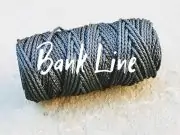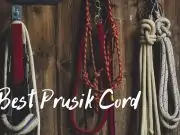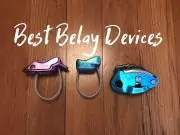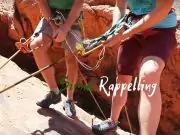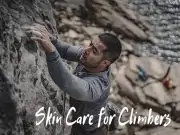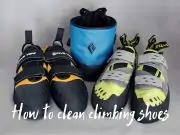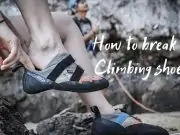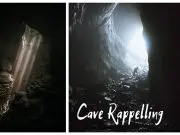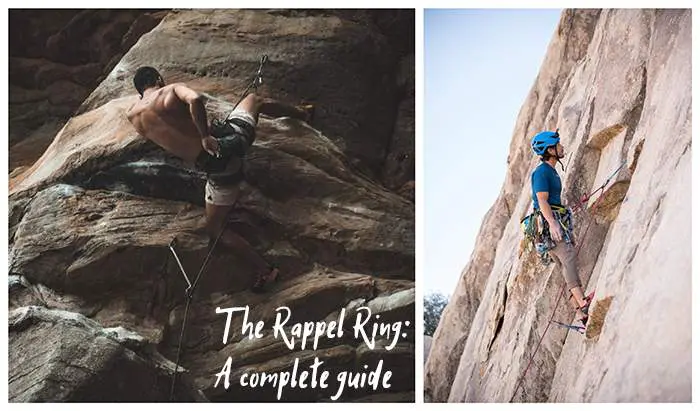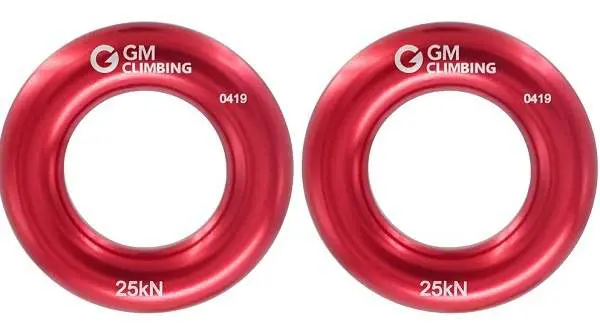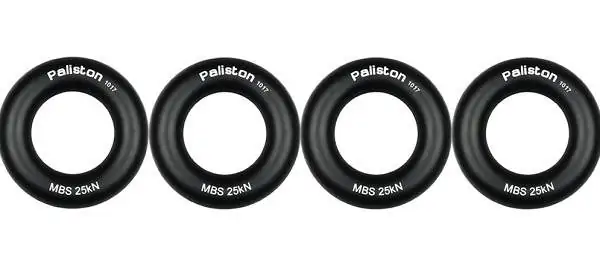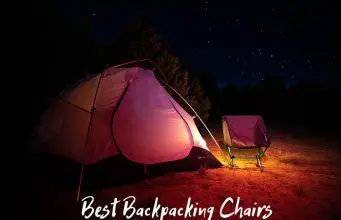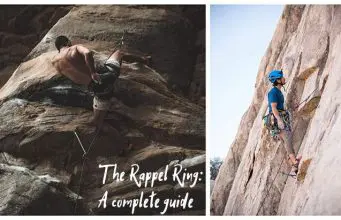The rappel ring is a very important piece of gear for many outdoor enthusiasts, but since it doesn’t cost very much and doesn’t fulfill a particularly exciting role, it’s often overlooked or treated casually. However, I’ve seen first-hand how costly it can be to choose the wrong rappel ring, to say nothing of using one the wrong way. Therefore, I decided to put together this unique guide, which aims to answer some of the most important questions regarding rappel rings.
Most importantly, you’re going to learn what kind of rappel ring you should use and which ones are worth your money. Until then, however, I think it would be best to start off with a very basic guideline.
What are rappel rings for?
Also known as Rap Rings, these circular pieces of metal have a wide variety of applications. Most notable among them are climbing, rappelling, and canyoneering, but people also use them as impromptu belay devices in cases of emergency. Normally, rappel rings are used to build anchors, and they can also prevent the rope from wearing through various anchor materials. Keep in mind that rap rings or O-Rings are meant to be replaced from time to time, but this depends on how often they are used and how much strain is put on them over time.
Choosing the right rappel ring for the right job is very important, which brings us to the next part of the guide:
How to use rap rings for rappelling.
When it comes to rappelling, you use rap rings as points of contact for the rope. This means that you don’t have to tie into any form of tubular webbing. Make sure that the rope slides nicely over the anchor point at the top until you’re able to reach the end of your rappel. The reason why you should use a rappel ring instead of webbing is that the rope might cut through it after a while. I think you know by now that if your anchor fails, you will fall.
With the help of the rappel ring, the rope just slides smoothly across its surface. Obviously, the ring will wear out after a while, which is why you should check on the condition of your rings regularly. Moreover, the rings are made out of different materials, some of which wear out faster than others. While steel and titanium are the most durable, these are usually a bit more expensive than aluminum, which is more affordable but wears out sooner. This brings us to the most important question, and the reason why you came to this article in the first place:
What are the best rappel rings out there?
As I mentioned before, rappel rings are made out of relatively strong metals, but some are definitely more durable than others. Generally speaking, stainless steel rings and quick links will last the longest, but there’s nothing wrong with aluminum O-Rings, especially the ones that are on offer these days. That’s because some of the world’s most reputable manufacturers have come up with ingenious ways of creating rap rings from various aluminum alloys. This makes them almost as strong and durable as stainless steel rings while keeping the overall weight down.
When it comes to pricing, these rings aren’t particularly expensive, so it’s not a tragedy if you have to leave them behind. Sometimes you can’t build a retrievable anchor, and that’s fine.
GM Climbing Rappel Rings.
Some of the best rappel rings I’ve come across are the GM Climbing ones, which usually come in sets of two or five. While they’re a bit more expensive than other offerings you can find online, they are incredibly durable with a 25kN / 5600lb breaking strength.
They also come in different sizes, with small rings measuring in at 11.5mm while the large rings are 12mm. They’re chunky and incredibly durable thanks to a unique manufacturing process based on aluminum alloy. They have a wide variety of applications, of course, including rock climbing, rappelling, arborist work, and hammock building.
Petzl Open Multi-Directional Gated Ring.
As an alternative, there’s always the Petzl rappel ring, which is put together using a seamless forge technique. This ensures a breaking strength of 23kN, which is a bit lower than the GM one but still an impressive feat nonetheless. In my experience, rappel rings rarely break or give in unless they’re incredibly old or subjected to incredible forces. The working load limit for the PROND is 3,000 lbs, which is probably more than you’ll ever need.
These rings are sold individually or in packs of five. They can be used for hammock building, rappelling, rock climbing, arborist, and slacklining. I usually buy packs of five or more whenever I shop for these kinds of products, but that’s because I like having spare rings at all times. Also, I tend to lose quite a few while on the road somehow, so it’s never a bad idea to pack extra.
Paliston Rappel Ring for Climbing, Arborist and Hammock.
Paliston has put together one of the most versatile offerings when it comes to rappel rings. What I mean by that is that these rings can also be used for arborist work, hammock setup, and rock climbing. The rings were created using hot-forged aluminum alloy, which means they are rated at 25kN. Furthermore, a seamless forge technique ensures that the connection point is always safe every time you use one of these rings. You wouldn’t be able to mess up the loading direction even if you tried.
They are available in three different color options such as blue, black, and red, just in case color matching is important to you. I should also mention that Paliston offers storage bags for packs of four, which is definitely a nice, practical touch.
What rappel rings should you avoid?
I never recommend counting pennies when buying rappelling gear or any type of gear for that matter. When it comes to these types of outdoor activities, your life may very well depend on the quality of your gear, and the same goes for rappel rings. Avoid cheap-looking, small and hollow rap rings made out of aluminum, as those tend to wear out in no time at all. Furthermore, once they begin to wear out they pretty much lose more than half of their strength, so just go for rings made by well-known brands, especially since those actually offer warranties for their products.
If you do have to use a rappel ring that you’re not too sure about, there are a few steps you can take before using it to make sure that it at least “feels” fine.
- Inspect the ring carefully on all sides, both inside and out, to make sure that there aren’t any visible weak spots or cracks.
- Rappel rings could potentially fail if used in muddy or sandy conditions. That’s when the rope can exert an increased amount of friction to the ring’s surface thus causing it to wear off much sooner than usual. Make sure that your rope and rings are as clean as possible!
- Feel the ring with your fingers for any shaved metal that might cause damage to your rope.
- Test the ring by applying pressure to it in a safe environment. Practice a short, safe rappel.
- If you notice any irregularities, send the product back and get a replacement or something completely different. Don’t take any chances if you find any red flags, no matter how insignificant they might appear.
Here’s a checklist that will help you determine if a rappel ring is safe.
- Make sure that your rope block or stopper knot will actually fit through the ring. The main danger here is wedging your rope block into the ring, which could cause a fall. Choose the right size for your rappel ring at all times!
- Look for grooves in the metal, which are usually caused by rope contact. If you don’t want to replace the ring just yet, spin it around to make sure that it won’t wear out in the same spot every time you use it.
- If you use a carabiner connected to a rap ring, feel the inside of the ring for any sharp metal edges.
- Rappel rings should not have gaps, and ideally, they should not have welds. If your ring does have a weld, inspect it carefully to make sure that it still holds.
- Don’t use an oval-shaped ring. That ring was subjected to forces greater than it could handle, and it has already lost its integrity.
What’s better: Rappel Ring or Quicklink?
While both a rappel ring and a quicklink can basically perform the same job, both have their own strong suits and weak points.
Quicklink pros:
Generally, quicklinks are easier to get a hold of and are freely available to buy at any hardware store. On the other hand, rap rings represent official climbing gear. Therefore, buying them requires a trip to a specialized store or an online order.
You can unscrew quicklinks and attach them easily to bolts, webbing, or chain links, which makes them considerably more versatile.
You can carry quicklinks around easier. You can attach them to your harness loops or rope bags. Rap rings are easier to lose or misplace unless you put them on a rope sling or carabiner.
Rap ring pros:
Rings will never open up or fail under normal usage conditions, which makes them superior to quicklinks when it comes to safety and performance.
Once you reach the ground, it’s so much easier to pull the rope through a rap ring, as it usually has a larger center gap.
Quicklinks are not always wide enough for thicker ropes such as 11mm, which pretty much makes them unusable in certain scenarios. On the other hand, rings are designed to accommodate all rope sizes.
The round shape of a ring makes it last longer, especially since the rope won’t rub against the same spot with each use. Rings last longer and are generally more reliable than quicklinks, which makes them the default pick in my book.
Should you rappel with a rap ring?
While technically a rap ring could be used for rappelling as a belay device, this is highly unrecommended as it is potentially dangerous and life-threatening. However, for the sake of argument, I feel obliged to tell you that it’s definitely possible to use a ring for this purpose.
The way you would go about it is fairly simple: all you need to do is secure your harness tightly, pinch a bight of rope through the ring and into a carabiner secured on your harness. Next, clip the downhill part of the ring through the carabiner and test out the system before doing the actual rappel.
The process itself is not particularly complicated, but since these products were not designed to function as belay devices, there is always a risk of failure, which I would never take. Some companies such as Omega Pacific even state explicitly that their rings should never be used for rappelling. In an emergency situation, you could perform the technique I described above, but always keep in mind that you’re basically improvising.
Rock climbing applications.
People use rings in rock climbing instead of quicklinks for the same reasons I mentioned above. They will not wear out in the same spot every time, and they can’t come undone. You will find rings at the end of fixed chain anchors on the cliff face.
If you can help it, try to wear out your own gear instead of the common gear that’s usually left on the anchors. That’s not mandatory, of course, but it’s just to show consideration and respect to local climbing etiquette.
If you spot any irregularities with the communal rings, make sure to tell someone of note right away. They will likely be replaced soon if they are worn out or present signs of failure.
Using a rappel ring when rock climbing.
First off, you need to secure yourself to the main anchor with a personal anchor system. Then, link your rappel rings to the anchor point with quicklinks in order to obtain two parallel anchor points.
Now’s the time to clip a quickdraw to your rings so that the gates are opposite to one another.
In order to avoid extra wear on the rope, thread it through the quickdraws. This way, they won’t force it into the rock as you climb.
You can now tie yourself back in the rope with a figure-eight knot. Make sure to learn your knots carefully before you go on a rock-climbing trip. For a bit of extra help, you can check out my own guide.
Final words.
Rappel rings can have multiple applications, and they should definitely be a part of any serious climbers’ kit. However, it’s important to use the right tool for the right job at all times, so pick your rings carefully and make sure to take note of their strength, their size, and their wear levels.
I hope that this guide answered some of your most important questions about rappel rings. If you have any other questions or you would like to add something to this guide, don’t hesitate to get in touch.




